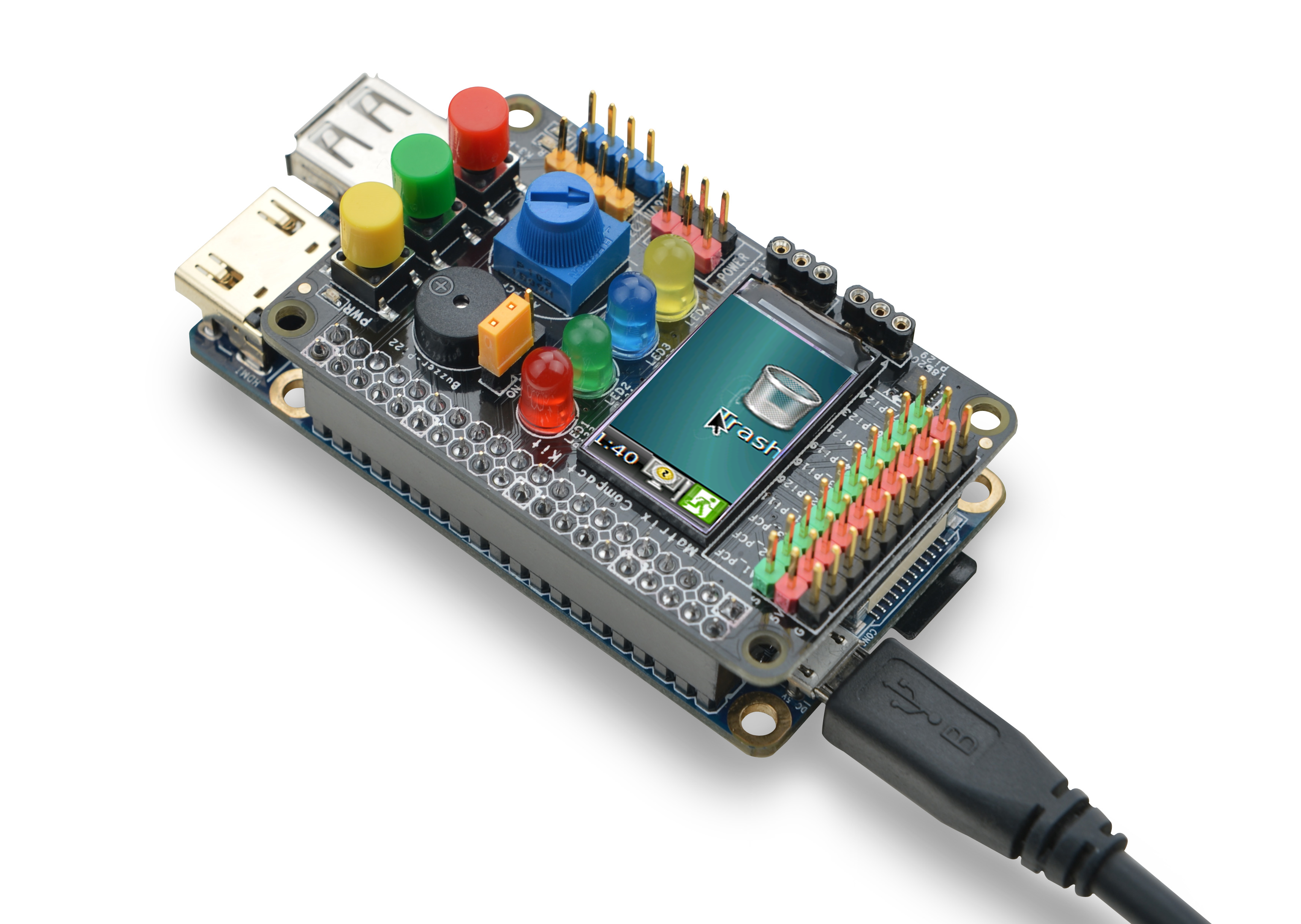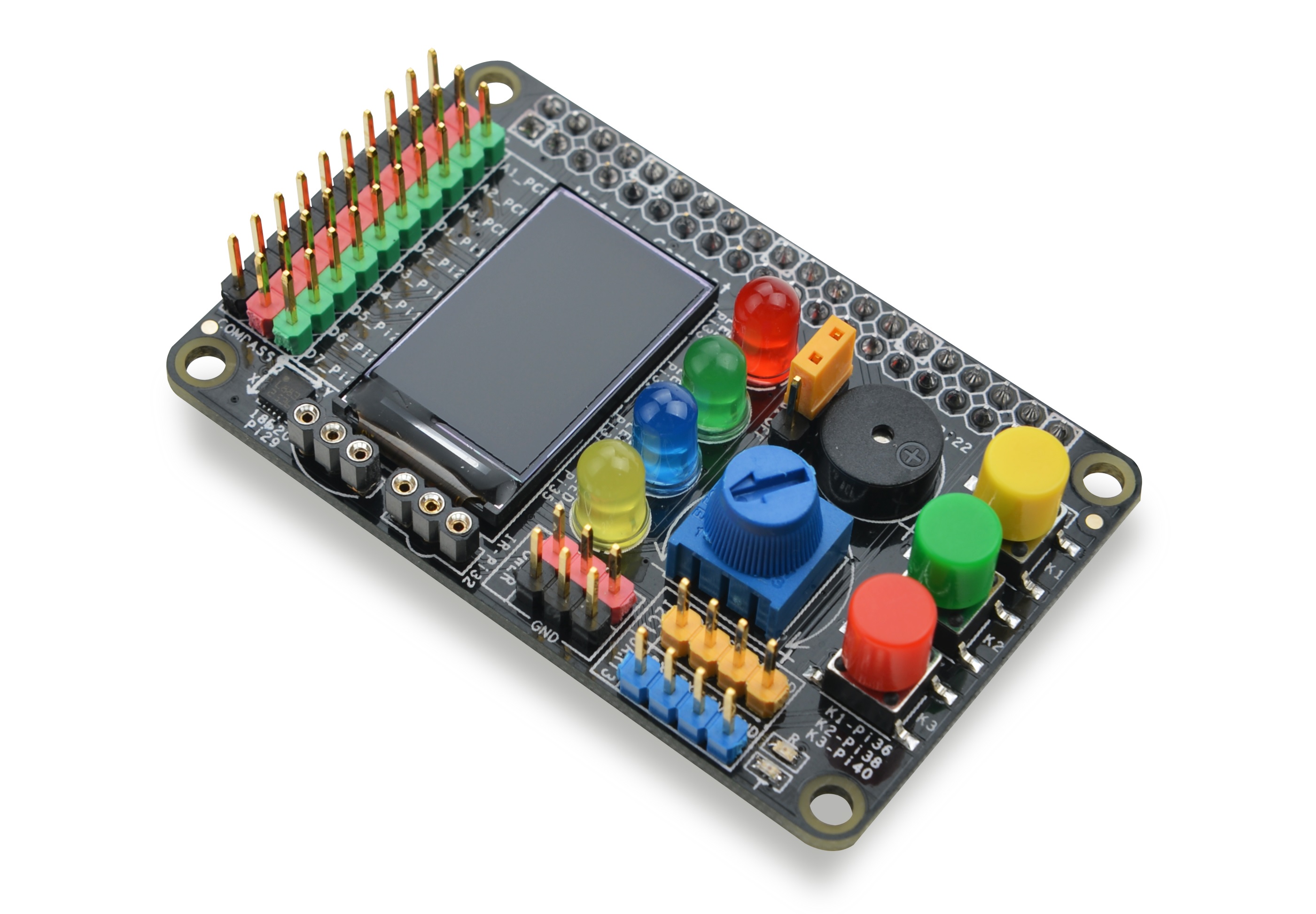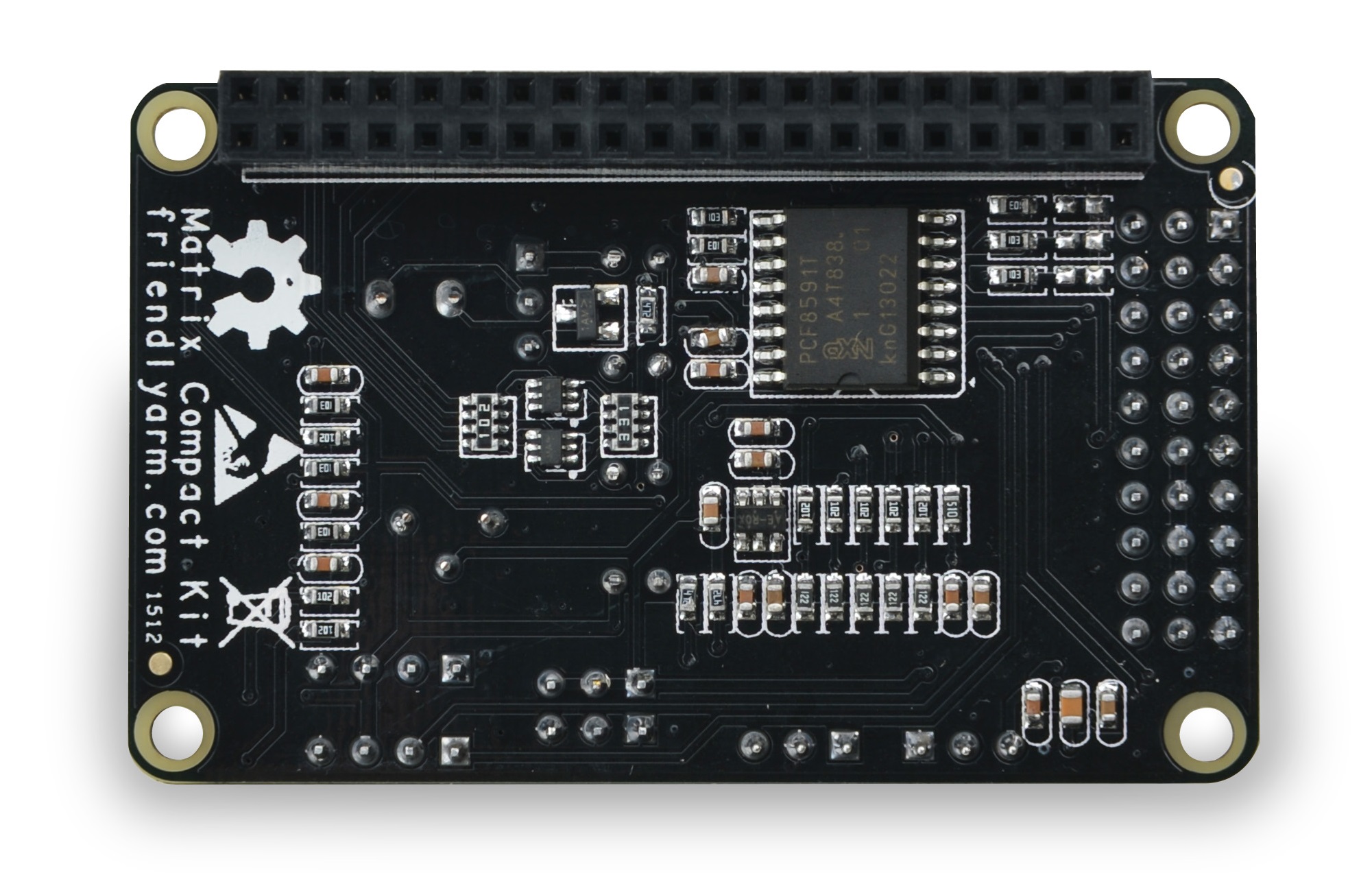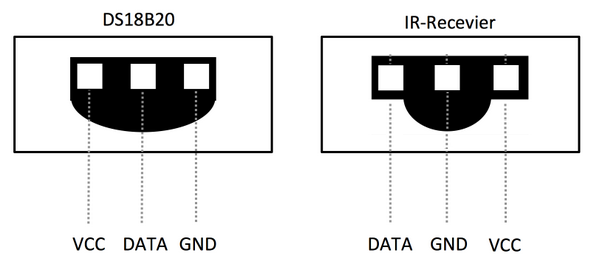Difference between revisions of "Matrix - Compact Kit"
(→通过Python控制) |
(→Applications) |
||
| (2 intermediate revisions by the same user not shown) | |||
| Line 97: | Line 97: | ||
==Applications== | ==Applications== | ||
===Connect to NanoPi 2=== | ===Connect to NanoPi 2=== | ||
| − | + | Refer to the following connection diagram to connect the module to the NanoPi 2:<br> | |
[[File:Matrix-Compact_Kit_nanopi2.jpg|frameless|600px|Matrix-Compact_Kit_nanopi2]] | [[File:Matrix-Compact_Kit_nanopi2.jpg|frameless|600px|Matrix-Compact_Kit_nanopi2]] | ||
| Line 190: | Line 190: | ||
$ python test/matrix_input.py 36 | $ python test/matrix_input.py 36 | ||
</syntaxhighlight> | </syntaxhighlight> | ||
| − | + | When you press KEY1 "value" will be set to 0. When you release KEY1 "value" will be set to 1. | |
| − | + | Test AD: | |
<syntaxhighlight lang="bash"> | <syntaxhighlight lang="bash"> | ||
$ cd matrix-python/modules | $ cd matrix-python/modules | ||
| Line 200: | Line 200: | ||
$ python test/matrix_adc.py | $ python test/matrix_adc.py | ||
</syntaxhighlight> | </syntaxhighlight> | ||
| − | + | When you change the resistor AD value will be changed accordingly. | |
| − | + | Test Compass: | |
<syntaxhighlight lang="bash"> | <syntaxhighlight lang="bash"> | ||
$ cd matrix-python/Matrix.I2C | $ cd matrix-python/Matrix.I2C | ||
| Line 208: | Line 208: | ||
$ python test/matrix_compass.py | $ python test/matrix_compass.py | ||
</syntaxhighlight> | </syntaxhighlight> | ||
| − | + | When you rotate the compass you will get changing direction values. | |
<!--- | <!--- | ||
| Line 563: | Line 563: | ||
===Mar-29-2016=== | ===Mar-29-2016=== | ||
* Corrected expression errors | * Corrected expression errors | ||
| + | |||
| + | ===June-19-2016=== | ||
| + | * Re-organized and simplified wiki | ||
Latest revision as of 10:32, 19 June 2016
Contents
1 Introduction
- The Matrix-Compact Kit is a compact board with various hardware resources, interfaces and ports. It includes user keys, LED, buzzer, ADC, compass, temperature sensor, IR receiver, TFT port and etc. This board can be connected to the NanoPi, NanoPi 2 and Raspberry Pi via its 40 pin header. In addition you can connect other external modules to its GPIOs.
2 Features
- PCB Dimension(mm):
- 40pin female connector's GPIO Pin Spec
Pin# Name Pin# Name 1 VDD_SYS_3.3V 2 VDD_5V 3 I2C0_SDA 4 VDD_5V 5 I2C0_SCL 6 DGND 7 GPIOB28 8 UART3_TXD 9 DGND 10 UART3_RXD 11 GPIOB29 12 GPIOB26 13 GPIOB30 14 DGND 15 GPIOB31 16 PWM2 17 VDD_SYS_3.3V 18 GPIOB27 19 SPI0_MOSI 20 DGND 21 SPI0_MISO 22 PWM0 23 SPI0_CLK 24 SPI0_CS 25 DGND 26 PWM1 27 I2C1_SDA 28 I2C1_SCL 29 GPIOC8 30 DGND 31 SPI2_CLK 32 GPIOC28 33 SPI2_CS 34 DGND 35 SPI2_MOSI 36 GPIOC7 37 SPI2_MISO 38 ALIVEGPIO2 39 DGND 40 ALIVEGPIO3
- 30pin Pin Spec
Pin# Name Pin# Name Pin# Name 1 GND 2 VDD_5V 3 A1_PCF 4 GND 5 VDD_5V 6 A2_PCF 7 GND 8 VDD_5V 9 A3_PCF 10 GND 11 VDD_5V 12 D1_Pi11 13 GND 14 VDD_5V 15 D2_Pi26 16 GND 17 VDD_5V 18 D3_Pi16 19 GND 20 VDD_5V 21 D4_Pi19 22 GND 23 VDD_5V 24 D5_Pi21 25 GND 26 VDD_5V 27 D6_Pi23 28 GND 29 VDD_5V 30 D7_Pi24
- 18B20 & IR Receiver Pin Spec
Module Pin# Name Pin# Name Pin# Name 18B20 1 VDD_5V 2 DATA 3 GND IR Receiver 1 DATA 2 GND 3 VDD_5V
3 Applications
3.1 Connect to NanoPi 2
Refer to the following connection diagram to connect the module to the NanoPi 2:

4 Compile & Run Test Program
Boot your ARM board with Debian and copy the matrix code:
$ apt-get update && apt-get install git $ git clone https://github.com/friendlyarm/matrix.git
If your cloning is done successfully a "matrix" directory will be generated.
Compile and install Matrix:
$ cd matrix $ make && make install
Run test program:
$ matrix-compact_kitNote: this module is not plug and play therefore before running the module please make sure it is connected to an ARM board.
Here is what you should observe:
LED blinking 1 LED blinking 2 Button: 1 1 1 ADC channel0: 550 Compass angle: 328.5 Pwm start Pwm stop
Run Qt program to test the TFT LCD:
cd matrix/demo/nanopi-status ./build.sh ./run.sh /dev/fb-st7735s
The program will present the system's basic information:

5 Code Sample
This Matrix code sample can work with all the ARM boards mentioned in this module's wiki. The name of this code sample is "matrix-compact_kit". Here is its source code:
int main(int argc, char ** argv) { int board; if ((board = boardInit()) < 0) { printf("Fail to init board\n"); return -1; } testLED(board); readButton(); readADC(); readCompass(); testPWM(board); // readTemp(); // testIR(); return 0; }
For more details about this APIs called in this code sample refer to Matrix API reference manual
6 Code Samples in Python
The Python version is 2.7.9 in the following samples
Install the Python libraries and modules:
$ apt-get install Python-dev libi2c-dev
The python code is in our github:
$ git clone https://github.com/friendlyarm/matrix-python.git
After it is done a matrix-python directory will be generated.
Access LED:
$ cd matrix-python/Matrix.GPIO $ python setup.py install $ python test/matrix_output.py 33
The red LED will be flashing.
Read KEY1:
$ cd matrix-python/Matrix.GPIO $ python setup.py install $ python test/matrix_input.py 36
When you press KEY1 "value" will be set to 0. When you release KEY1 "value" will be set to 1.
Test AD:
$ cd matrix-python/modules $ modprobe pcf8591 $ cd ../Matrix.pcf8591 $ python setup.py install $ python test/matrix_adc.py
When you change the resistor AD value will be changed accordingly.
Test Compass:
$ cd matrix-python/Matrix.I2C $ python setup.py install $ python test/matrix_compass.py
When you rotate the compass you will get changing direction values.
7 Resources
- [Schematic](Matrix - Compact Kit-Schematic.pdf)
- [Schematic](Matrix - Compact Kit-Schematic.pdf)
- [0.9'LCD datasheet](Matrix - Compact Kit-0.9'LCD datasheet.pdf)
8 Update Log
8.1 Feb-17-2016
- Added 5.9, 5.10 and 5.11
8.2 Feb-24-2016
- Added the driver's source code location in Section 5.2
8.3 Mar-21-2016
- Corrected typo in Section 5.9
- Added lib installation steps in Section 5.11
8.4 Mar-29-2016
- Corrected expression errors
8.5 June-19-2016
- Re-organized and simplified wiki



